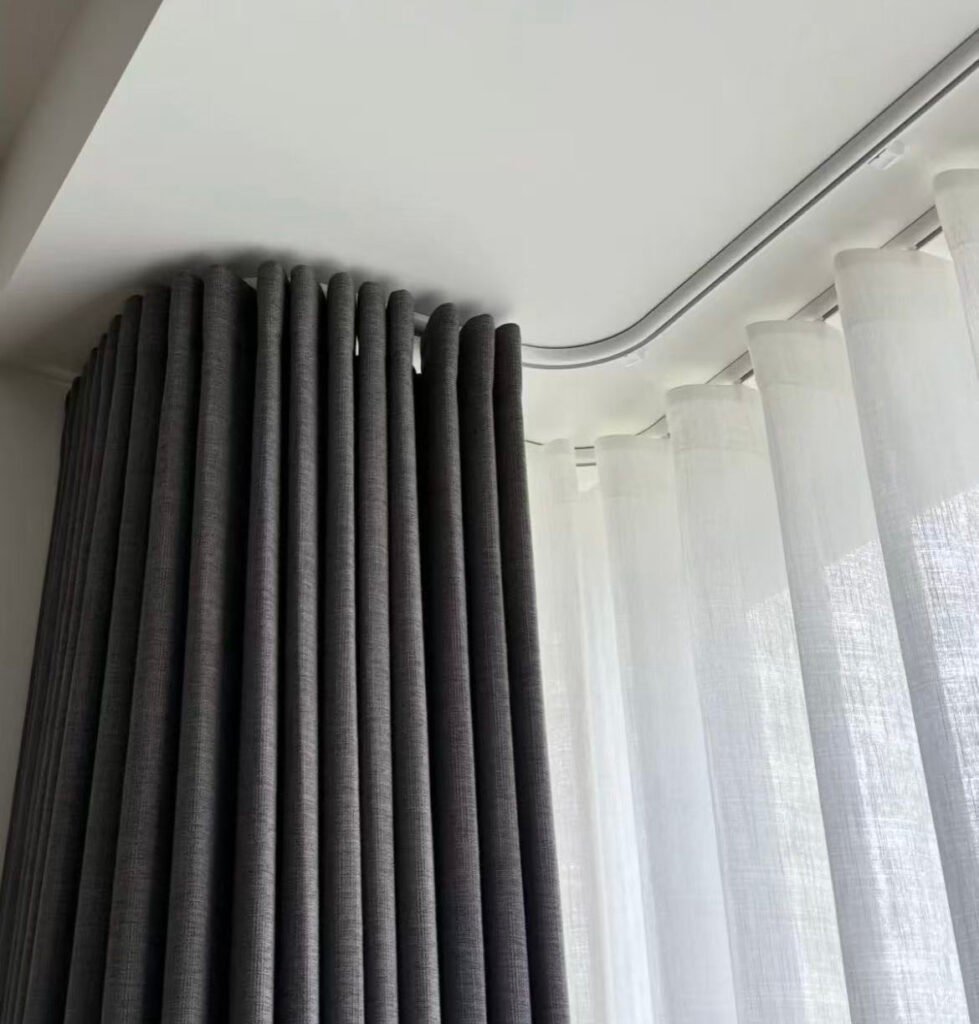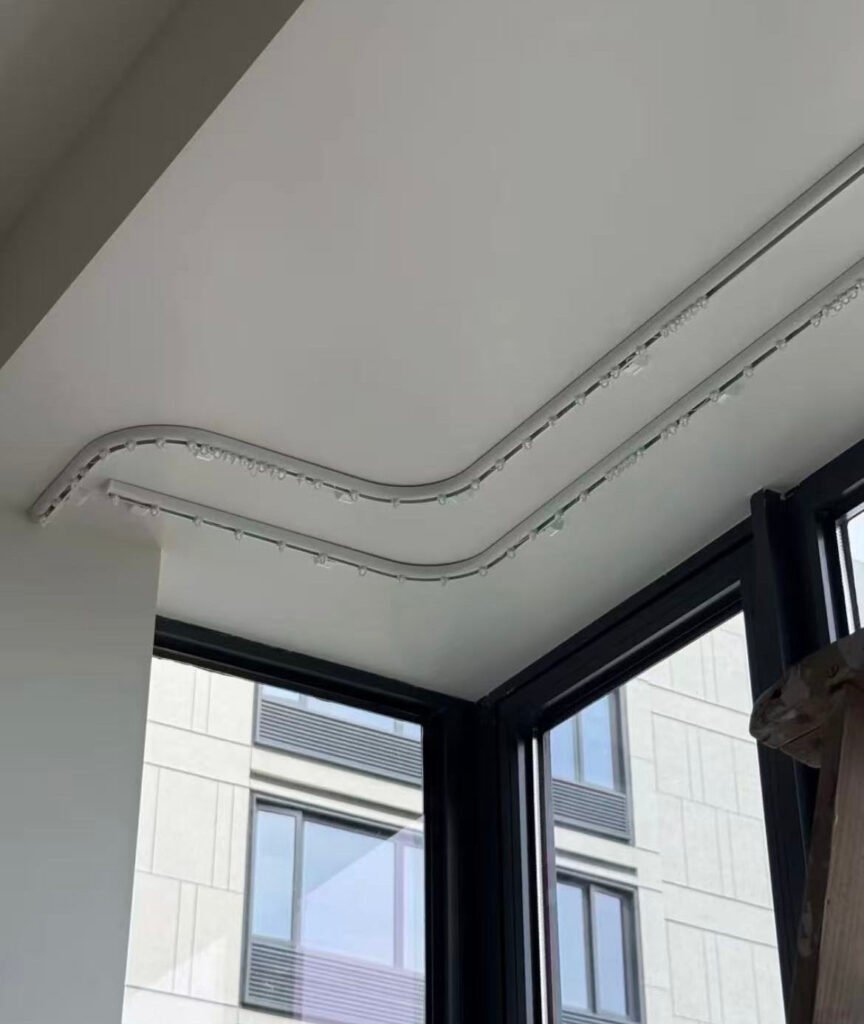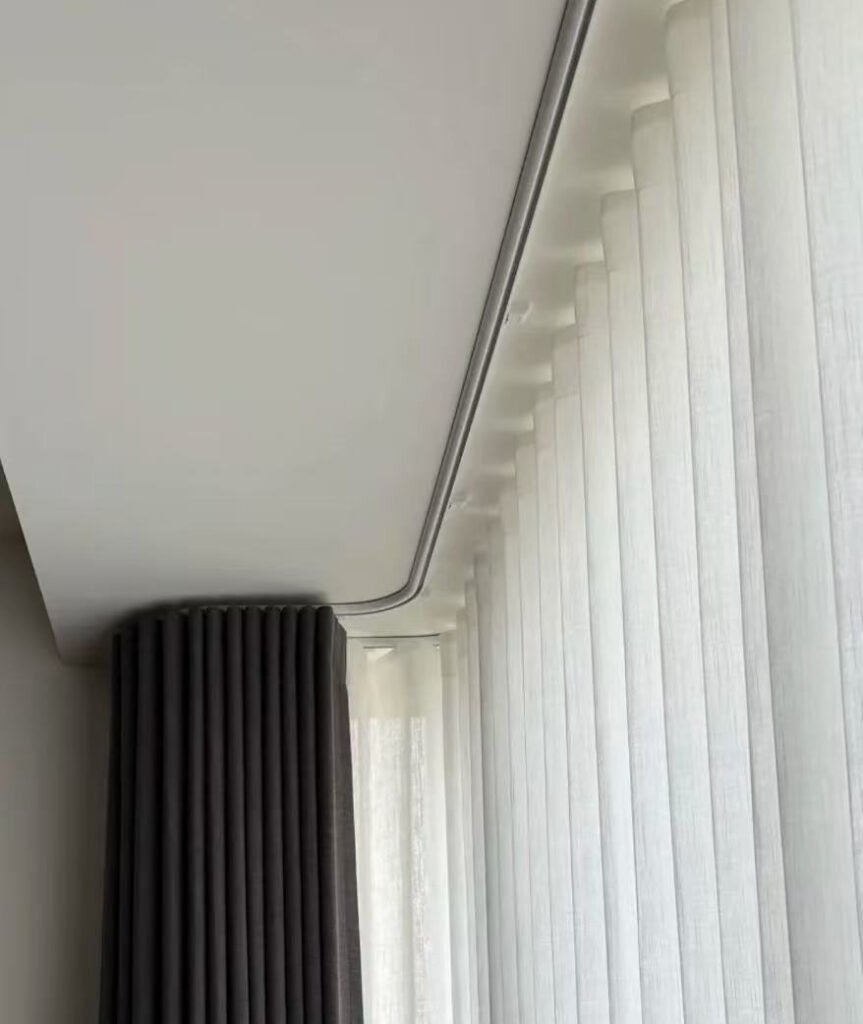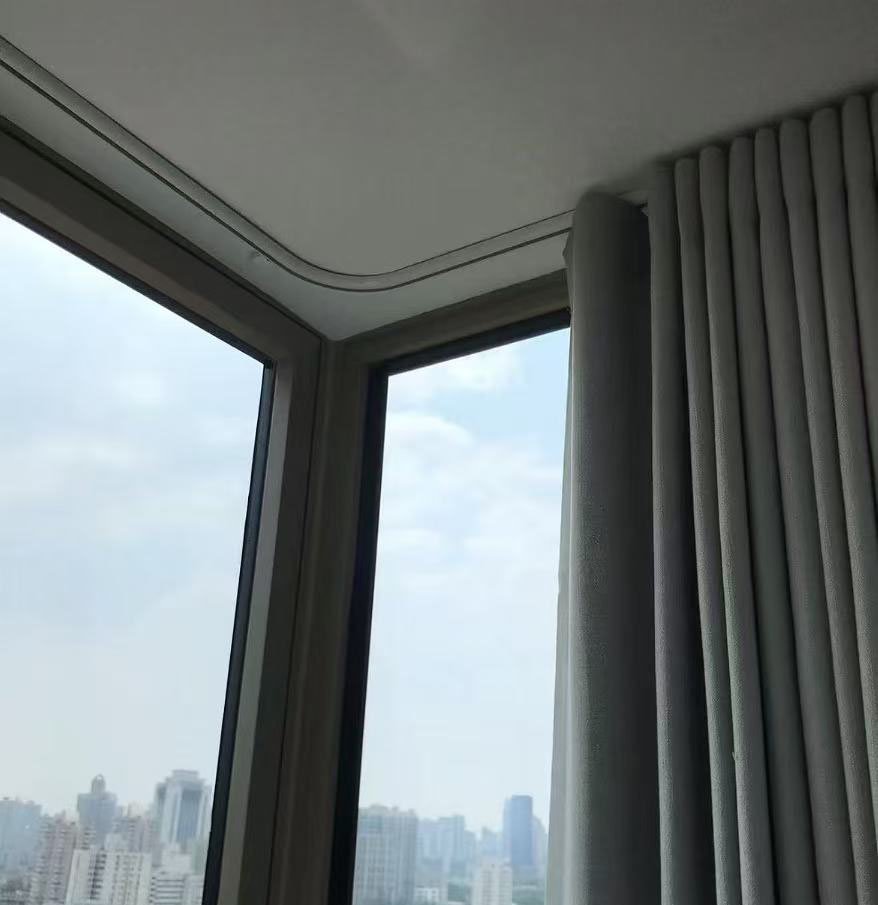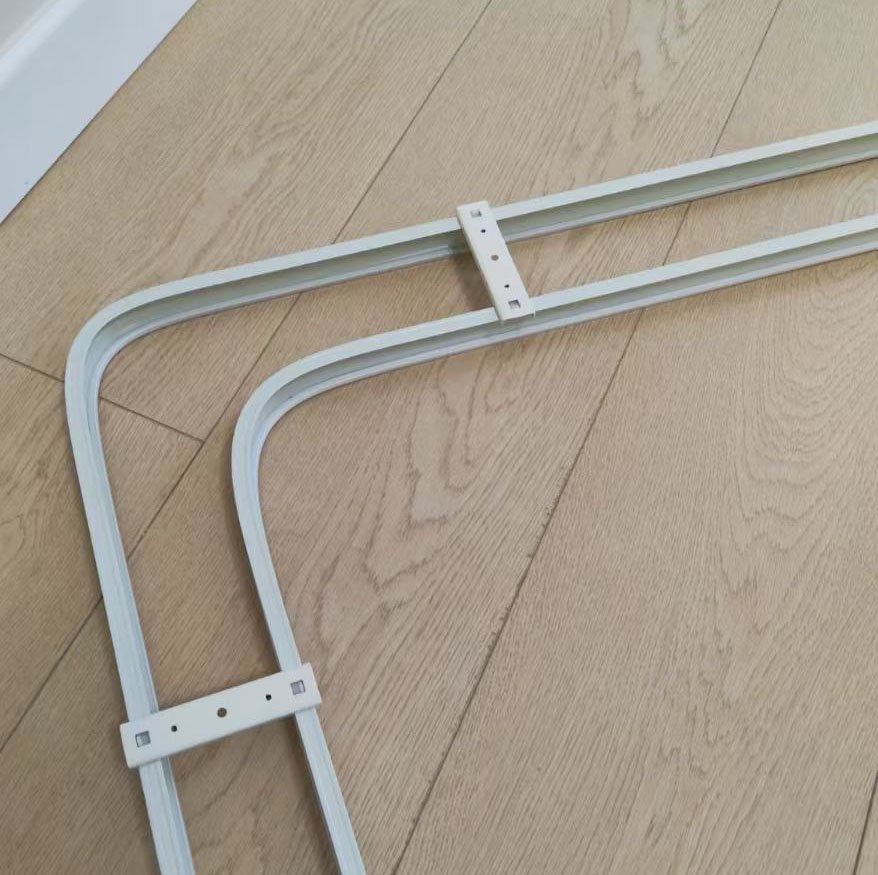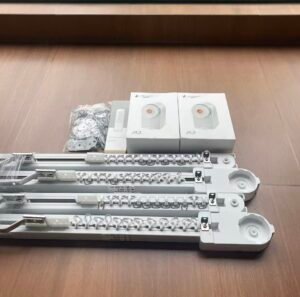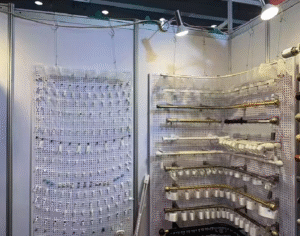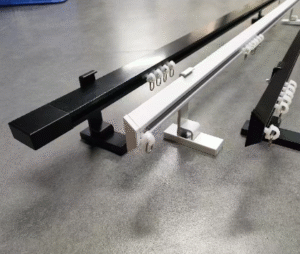Stressing over a complex bay window installation? A single mistake can derail an entire project, costing valuable time and money. Proper planning is the key to getting it right the first time.
To install tracks in large or bay windows, you must first take precise angle and segment measurements. Then, use either a hand-bendable track on-site or a custom-bent track from the factory. For extra-long windows, join straight sections with connectors and ensure robust support with correctly spaced brackets.
I've spent years on the factory floor, watching raw aluminum get extruded into precise profiles. I can tell you that the product itself is only half the battle. The other half is the installation, and that starts long before a drill is ever picked up. For complex jobs like bay windows, a small measurement error at the start can become a huge problem at the end. I work with purchasing managers like Matt to ensure the products they order are not just high-quality, but also perfectly suited for the specific architectural challenges their projects present. This guide is based on that hands-on, practical experience.
How Do You Accurately Measure for a Bay Window Curtain Track?
Are you worried your team's measurements won't translate to a perfectly fitting track? Inaccurate measurements are the number one cause of costly remakes and project delays for custom window treatments.
To measure a bay window, treat it as a series of straight lines and angles. Measure the length of each flat section (e.g., the back wall and each side wall). Then, use an angle finder or a cardboard template to determine the exact angle of each corner bend.
From a manufacturer's perspective, good data is everything. We can bend a track to a precise 135-degree angle, but only if we know that's what's needed. A common mistake is just measuring the total width and hoping a flexible track will work it out on-site. For a professional, commercial installation, that's not good enough. My advice is to always create a simple diagram. Send us a top-down sketch with the length of each segment and the angle of each corner clearly labeled.
For example: "Wall A: 150cm, Angle 1: 135 degrees, Wall B: 250cm, Angle 2: 135 degrees, Wall C: 150cm." This clear, technical communication eliminates guesswork and ensures the track we produce will fit your client's window like a glove.
Do You Need a Special Curtain Track for a Bay Window?
Is your team debating between bending a track on-site versus ordering a custom-curved one? Choosing the wrong type of track can lead to an unprofessional finish with kinks or an uneven curve.
Yes, you need either a specially designed hand-bendable track or a custom, factory-machine-bent track. Hand-bendable tracks offer on-site flexibility for simple curves, while machine-bent tracks provide a perfectly smooth, precise radius for high-end projects and complex angles.
On the factory floor, I saw the difference in these products firsthand. Hand-bendable tracks have a special profile, often with a section removed or a different internal structure, allowing them to be curved by hand without kinking. They are great for gentle, sweeping curves. However, for the crisp, specific angles of a typical bay window, a machine-bent track is superior. We place a straight track into a specialized bending machine that creates a flawless, uniform curve with no ripples or weak points.
Here's how to choose:
| Feature | Hand-Bendable Track | Machine-Bent Track |
|---|---|---|
| Precision | Good for gentle curves. | Perfect for specific angles. |
| Finish | Risk of imperfections if bent poorly. | Flawless, professional curve. |
| Best Use | Simple bay windows, on-site adjustments. | High-end hotels, complex architecture. |
| Strength | Can be slightly weaker at the bend. | Retains full structural integrity. |
For a premium project, I always recommend a machine-bent track. It guarantees the smooth glide and high-end aesthetic your clients expect.
How Do You Join Curtain Tracks for Extra-Long Windows?
Are you tackling a wide window that's longer than a standard track length? A visible or bumpy seam between two tracks can ruin the function and look of the entire installation.
To join tracks for long spans, use a purpose-built connector piece that slides into the profile of both track ends. These connectors are designed to hold the tracks tightly together, creating a single, rigid rail and ensuring the gliders can pass over the join without snagging.
The key to a good join is a strong, invisible connector. In our factory, these small connecting pieces are engineered just as carefully as the tracks themselves. They are typically made from steel or a dense polymer and are designed to fit snugly inside the track channel. When installing, cut both track ends perfectly straight with a fine-toothed hacksaw and de-burr the edges. Then, insert the connector, pushing the two track sections firmly together until there is no gap.
A well-designed connector will often have screws to lock it in place, creating a join that is as strong as the track itself. This ensures a continuous, smooth path for the curtain carriers, which is especially critical for heavy or motorized curtains.
How Many Support Brackets Does a Bay Window Track Need?
Are you concerned about a long track sagging under the weight of heavy curtains? Insufficient support is a major safety and durability issue, especially in commercial settings like hotels.
For bay windows, a support bracket should be placed at each end of the track and on both sides of every corner bend, typically 5-10cm away from the bend. For the straight sections, brackets should be spaced every 50-60cm to ensure the track remains rigid and secure.
Support is all about physics. The corners and the center of long spans are the weakest points. From an engineering standpoint, placing a bracket on either side of a bend provides the reinforcement needed to handle the rotational force and weight when the curtains are drawn around the corner. On a long, straight wall, the weight of heavy blackout fabric will cause the track to sag if brackets are too far apart. We always advise our clients to follow this simple rule: when in doubt, add another bracket. It's a small cost that prevents a big failure.
For heavy commercial drapes1, reducing the spacing to every 40cm is a wise precaution. A securely fastened track2 feels solid and operates smoothly, reflecting the quality of the entire project.
Conclusion
In short, successfully installing tracks on large and bay windows depends on three things: precise measurement, the right product choice, and proper support. Getting these details right ensures a professional result.
